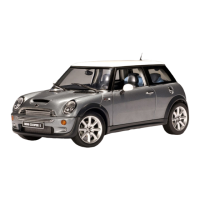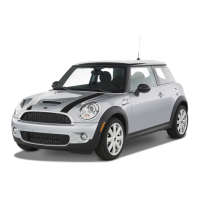– Decelerating downhill.
– Deceleration before a red light.
Avoid late or abrupt braking. Instead, decel-
erate the vehicle using energy recovery.
Set energy recovery
Concept
The energy recovery is adjustable.
– High energy recovery: the vehicle decel-
erates faster, more energy is returned to
the high-voltage battery.
– Low energy recovery: the vehicle decel-
erates more slowly, less energy is re-
turned to the high-voltage battery.
Overview
Energy recovery
Adjusting
Press the button up or down.
– LED off: high energy recovery.
– LED illuminated: low energy recovery.
The setting is displayed in the instrument
cluster.
Coasting
The electric drive makes it possible to roll
without consuming energy. This driving
condition is referred to as coasting.
Proactive driving reduces energy consump-
tion and increases the range.
With vehicle rolling, no energy is recov-
ered.
Exemplary traffic situations
If a route can be traveled without antici-
pated need for braking, it is advantageous
to roll.
The following exemplary driving situations
may be suitable:
– Rolling on a straight downhill route
without obstacles.
– Coasting on a route without obstacles.
Avoid late or abrupt braking.
Acoustic pedestrian protection
The system generates a continuous driving
noise during electric driving up to approx.
20 mph/30 km/h.
A speaker system broadcasts the noise to
the surroundings.
As a result, other road users, for instance
pedestrians or cyclists, can better perceive
the vehicle.
Heavily discharged high-voltage
battery
If the high-voltage battery is heavily dis-
charged during the trip, the performance
and some comfort features are reduced
step-by-step to extend the range.
Heated high-voltage battery
With a stationary vehicle
In isolated cases, when the vehicle is sta-
tionary, it is possible for the high-voltage
battery to overheat, for instance, as a result
of extreme hot or cold temperatures or di-
rect sunlight. Drive-ready state cannot be
Seite 106
CONTROLS Driving
106
Online Edition for Part no. 01405A02680 - II/20

